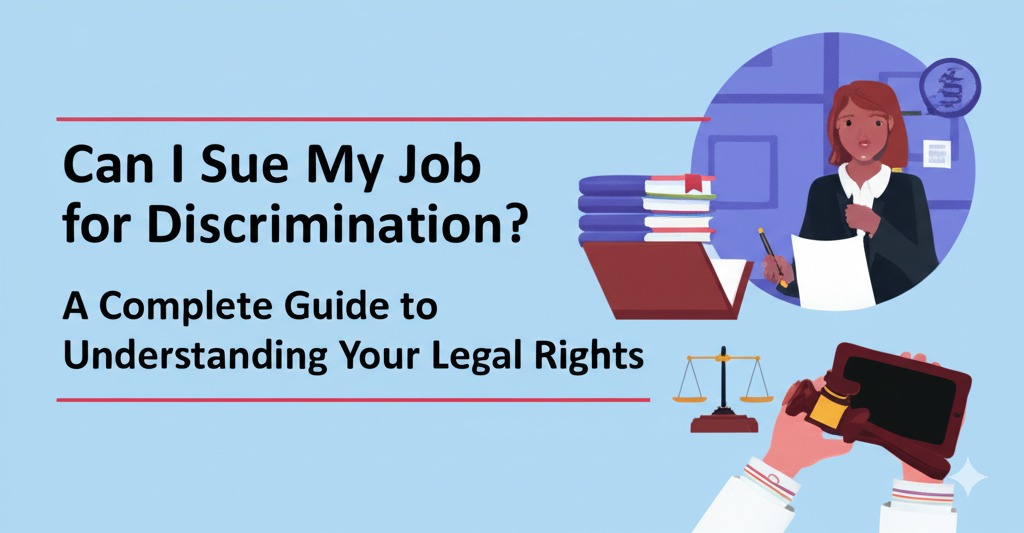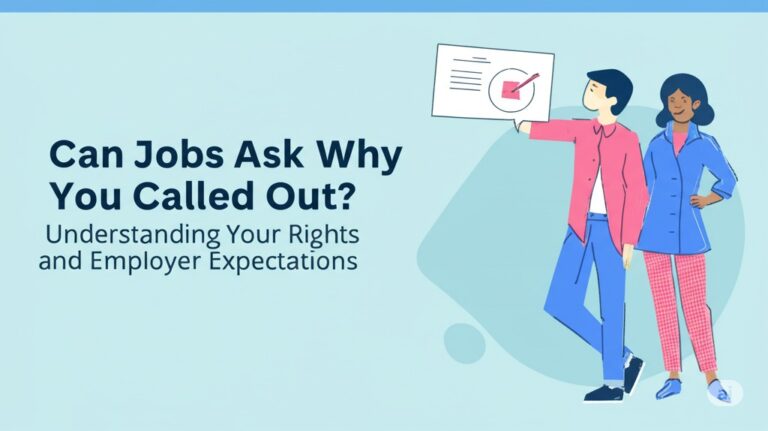
Discrimination in the workplace is a serious issue that affects millions of workers every year. Whether it’s based on race, gender, age, disability, religion, or any other protected characteristic, workplace discrimination can leave employees feeling helpless and vulnerable. One common question that arises is: Can I sue my job for discrimination?
If you’ve experienced unfair treatment or harassment at work, it’s important to know your rights. In this article, we’ll explore what workplace discrimination looks like, the steps to take if you believe you’re a victim, and the legal options available to you.
What is Workplace Discrimination?
Workplace discrimination occurs when an employee is treated unfairly or harassed based on specific protected characteristics. The Equal Employment Opportunity Commission (EEOC) defines discrimination as treating an employee or job applicant unfavorably due to factors such as:
- Race or Color: Discriminating based on someone’s race, ethnicity, or skin color.
- Gender or Sex: Discriminating against an individual due to their gender, including pregnancy, sexual orientation, or gender identity.
- Age: Discriminating against individuals who are 40 years of age or older.
- Disability: Discriminating against individuals with disabilities or who are perceived to have disabilities.
- Religion: Discriminating based on religious beliefs or practices.
- National Origin: Discriminating due to an individual’s ethnicity, accent, or place of origin.
Discrimination can manifest in many forms, including unfair pay, lack of promotion, exclusion from opportunities, and hostile work environments. If you suspect you’ve been discriminated against, it’s crucial to recognize the signs early on.
Can You Sue Your Employer for Discrimination?
Yes, you can sue your employer for discrimination, but it’s important to understand the legal framework surrounding such claims. Here are the key steps and considerations:
1. Report the Discrimination Internally
Before you can take legal action, most employers will expect you to address the issue internally. This could mean filing a formal complaint with your company’s human resources (HR) department. In some cases, your employer may have policies in place to investigate and resolve discrimination complaints.
Taking this step also creates a record of your complaint, which could be crucial if you later need to pursue legal action.
2. File a Charge with the EEOC
The next step in the process is to file a charge of discrimination with the Equal Employment Opportunity Commission (EEOC) or your state’s local fair employment practices agency. This must be done before filing a lawsuit in most cases. The EEOC will investigate the claim, and you may receive a Right to Sue letter, which is required before you can file a lawsuit in court.
3. Understand the Statute of Limitations
It’s important to note that discrimination claims are time-sensitive. You typically have 180 days from the date of the alleged discrimination to file a complaint with the EEOC. This timeframe may be extended in certain situations, but waiting too long could jeopardize your ability to pursue legal action.
4. Evaluate Whether Your Claim Qualifies for a Lawsuit
After you receive a Right to Sue letter from the EEOC, you can decide whether to file a lawsuit. Your claim must meet the legal criteria for discrimination, which includes:
- Evidence of discrimination: This may include documents, emails, or witness testimony that supports your claim.
- Proving adverse actions: You must demonstrate that your employer’s actions resulted in significant harm, such as losing your job or facing detrimental work conditions.
Common Types of Discrimination Lawsuits
If you decide to pursue a discrimination lawsuit, it’s helpful to understand the different types of claims that can be made. Some common examples include:
Wrongful Termination
If you were fired for discriminatory reasons, such as your race or age, this could be considered wrongful termination. To succeed in a wrongful termination case, you’ll need to show that the dismissal was based on an illegal discriminatory reason rather than a legitimate business decision.
Harassment
Workplace harassment is another form of discrimination. If you are subjected to unwanted and offensive conduct based on a protected characteristic, you may be able to sue your employer for creating a hostile work environment. Harassment can be physical, verbal, or even through the creation of a culture of exclusion.
Unequal Pay
If you’re paid less than others in the same role and you can prove that the difference is due to discrimination, this could be the basis for a pay discrimination lawsuit. In such cases, pay differences must not be justified by factors like experience, education, or performance.
What Are the Possible Outcomes of a Discrimination Lawsuit?
If you win a discrimination lawsuit, there are several potential outcomes:
- Compensatory Damages: This includes lost wages, emotional distress, and other harm suffered due to the discrimination.
- Punitive Damages: In some cases, the court may award additional damages as a penalty for the employer’s discriminatory actions.
- Reinstatement: If you were terminated, you may be ordered to be reinstated to your job.
- Settlement: Many discrimination lawsuits are settled before going to trial, allowing both parties to agree on compensation without the uncertainty of a trial.
Should You Seek Legal Help?
Discrimination lawsuits can be complex and emotionally taxing. It’s often wise to seek legal counsel to guide you through the process. An experienced employment attorney can help you:
- Understand your rights and whether you have a case
- File a claim with the EEOC and represent you in legal proceedings
- Determine if settling or going to trial is in your best interest
Conclusion: Taking Action Against Discrimination
Discrimination in the workplace is not just unfair—it’s illegal. If you believe you’ve been discriminated against at work, you have legal options to pursue justice. The process can be challenging, but understanding your rights, filing the necessary claims, and working with legal experts can give you the best chance for a favorable outcome.
If you’re unsure about your next steps, don’t hesitate to consult with an attorney who specializes in employment law. You don’t have to navigate this difficult journey alone—help is available.
By following these steps and understanding your legal options, you can take meaningful action to protect your rights and hold your employer accountable for discriminatory behavior. Don’t let workplace discrimination go unchecked—stand up for yourself and ensure that justice is served.

Andre Cuevas provides career insights, job search strategies, and professional advice to help individuals navigate the job market and achieve their career goals.




